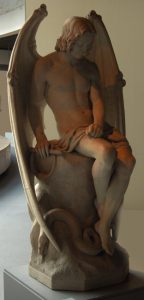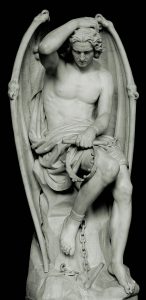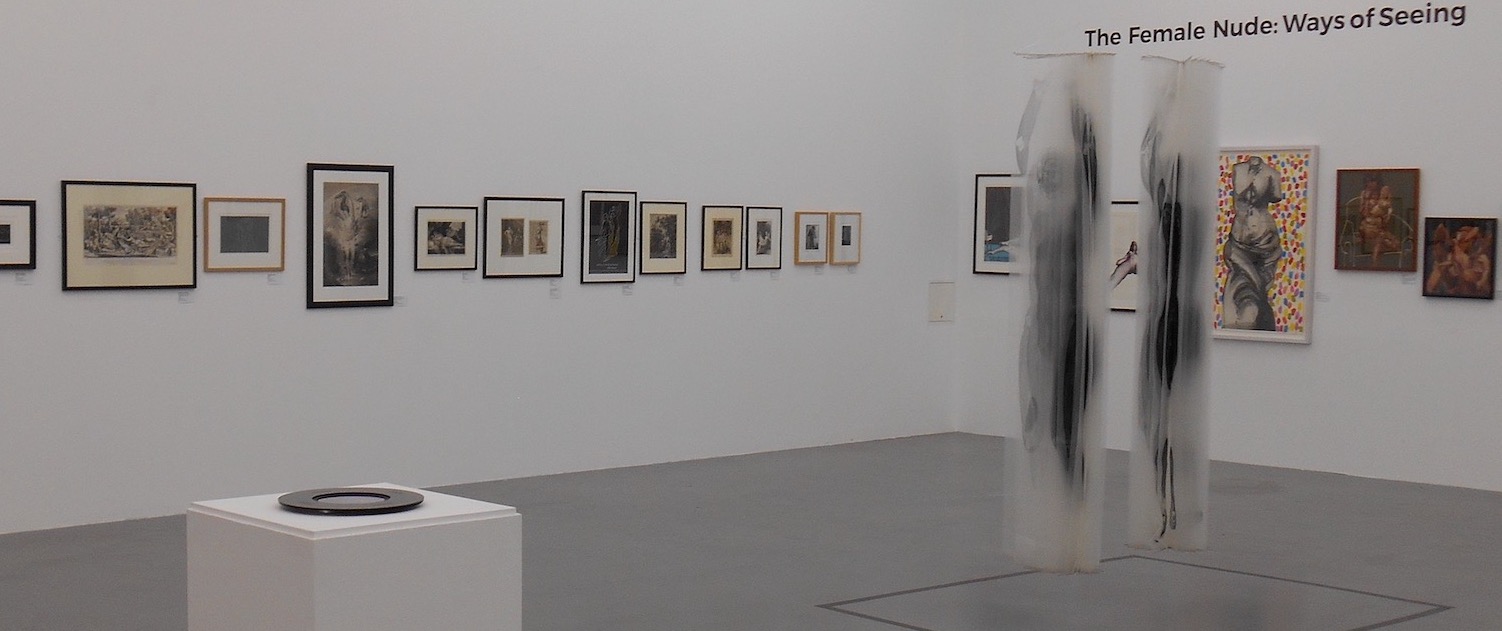Earlier this year I was listening to an episode of Black Mass Appeal, a podcast created by members of the US-based Satanic Temple (BMA Episode 1, 08/08/17). Despite the name, the Temple are a group of atheistic US citizens who follow a set of tenets that espouse freedom, empathy, and a struggle for pluralism in the United States. The Temple made headlines in 2018 when they installed an 8-ft bronze statue of Baphomet – an icon they use frequently – in front of the Arkansas State building as a protest against plans to install a statue of the 10 Commandments. The Satanic Temple believe in a clear separation of church and state and the installation of this statue has become a common method of protest towards any planned installations of religious works in government buildings.
During the podcast, there was a discussion regarding a different statue depicting Satan that had been created for a church in Europe but was deemed too attractive and the church commissioned a second one which turned out to be even more attractive than the first one! Intrigued, I investigated the statue(s) and found that the opinion of the “sexy Satan” statue was not an exaggeration and it is a surprise to me that the work is not better known.
St. Pauls Cathedral in Liege, Belgium, placed a commission in 1837 to sculptor Joseph Geefs to create several statues of religious figures, such as Saints, and also Lucifer, to be installed in a pulpit. The theme for the piece was the “Triumph of Religion over the Genius of Evil”. The statue of Lucifer would be installed to the rear of the pulpit, literally turning his back on the images of religion at the front. The figure of Lucifer was carved in white marble and was duly installed with the other figures in 1843.

L’ange du mal (1842) depicts a beautiful male youth sitting atop a rock, with only a tiny slip of fabric covering his modesty. Were it not for the bat-like wings and coiled serpent at his feet, the figure does not immediately bring to mind the common image of the Devil (though it is worth noting Lucifer is described as the most beautiful angel in Ezekiel 28:12b-17). Soon after the work was installed, there were complaints by the clergy that the work was too distracting to “sensitive” female worshippers, and the church administration stated that “the devil is too sublime” (Geuzaine 1990). Eventually, the statue was removed from public display, and purchased by William II of the Netherlands. Perhaps he felt he was above temptation!
After the fiasco, the church commissioned Joseph Geef’s older brother Guillaume to create a suitable replacement. This figure, also carved in white marble, is almost equal in proportions to the original and was installed in 1848.

Le genie du mal (1848) seems to ramp up the devilish aesthetic to counter the criticism levelled at Joseph’s sculpture. He grasps a broken sceptre and crown in fingers that end in sharp talons. The fallen angel is chained to his rock and, while the serpent that lay at the feet of his predecessor is now gone, an apple lies discarded on the floor. This is a clear reference to the original sin he encouraged.
Alongside this reference, Guillaume created some inspired changes to fit with the theme of the punishment of evil. Lucifer holds his head and gazes downwards – perhaps to avoid chastisement, perhaps imagining the divine favour now lost to him forever. An accompanying tear drips down from his eye towards an anguished – yet sensual – open mouth. The figure’s modesty is covered more fully, but his adjusted pose has allowed Guillaume to explore the tense muscles in Lucifer’s raised arm and his finely sculpted chest. This figure is more muscular in both body and wing, and his curled hair more voluminous, barely covering small horns. The church evidently approved the additions as this figure was installed without any further complaint and Lucifer had remained in St. Pauls ever since.
Joseph Geefs’ original, L’ange du mal, was passed on after William II’s death and eventually reached the Royal Museum of Fine Arts in Belgium in 2009.
Thus, did Guillaume’s additions of Luciferian imagery remove the “sexualised” nature of the original? Or – as the podcast Black Mass Appeal would agree – did he (un)wittingly create an even more beautiful devil to be worshipped?
Allen Fairway (BA Art History, 1st Year)
Reference:
The quotation that the devil was too sublime (“Ce diable-là est trop sublime”) comes from L’Émancipation, 4 August 1844, as cited by Jacques Van Lennep, La Sculpture belge au xixe siècle, exposition organisée à Bruxelles du 5 octobre au 15 décembre 1990, La Générale de banque, Bruxelles (Exhibition catalogue, 1990); Geuzaine and Creusen, Vers la modernité.
